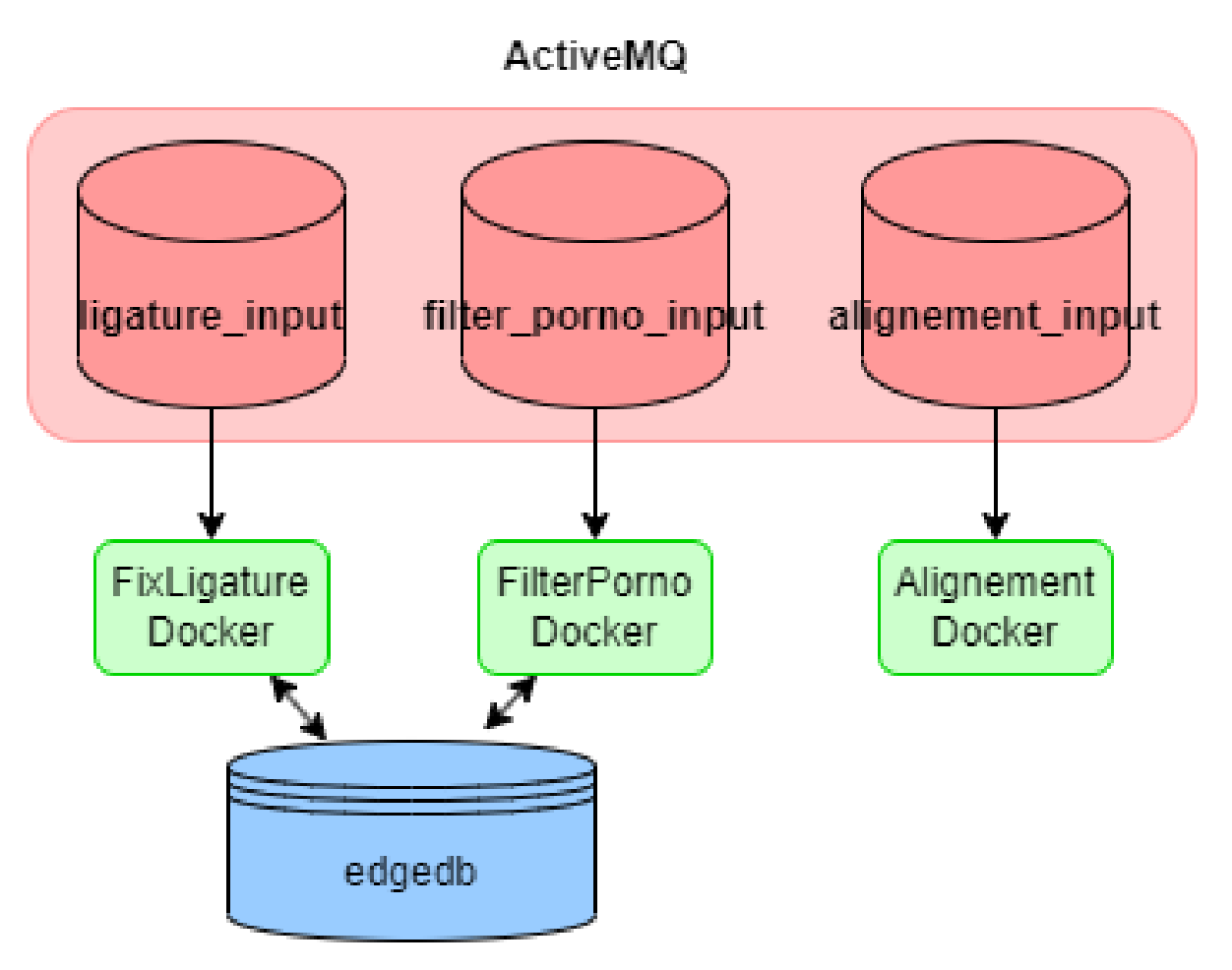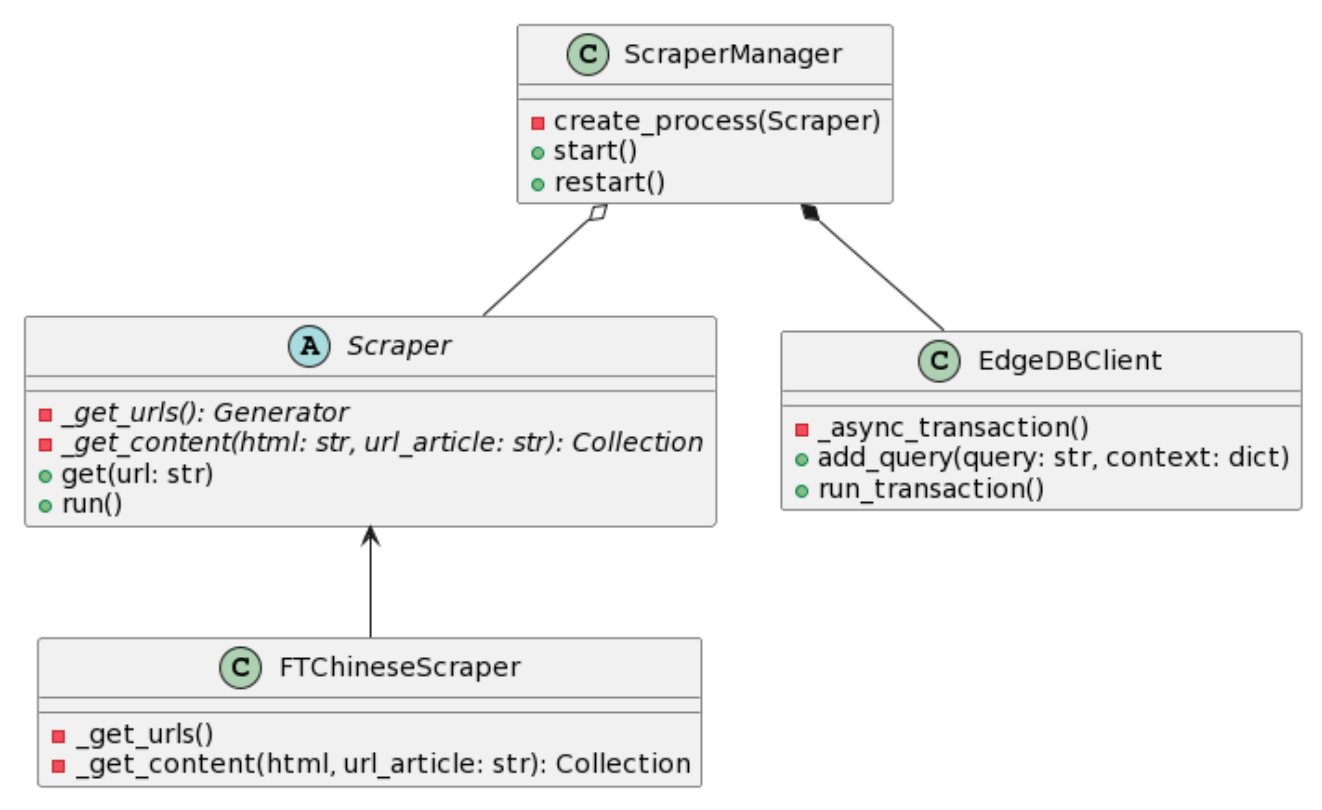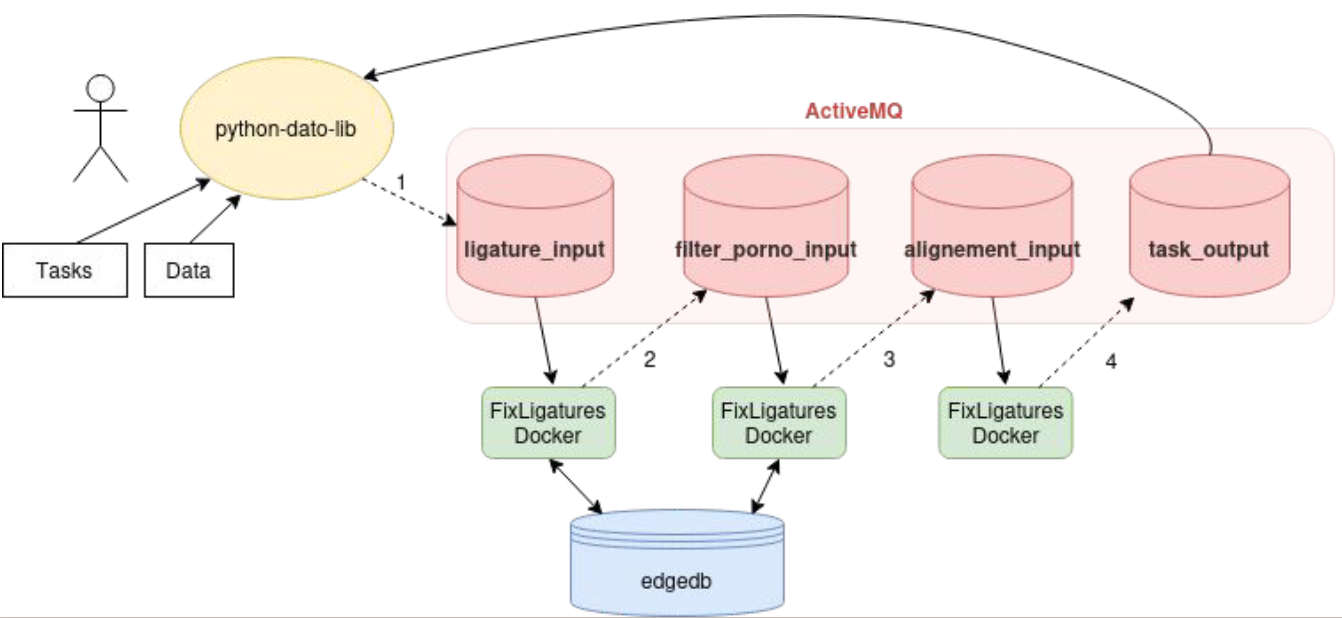Data Processing Platform Development at Lingua Custodia
The focus of this project was on developing “Datomatic,” a new internal platform for cleaning and processing data to train translation engines, migrating from manual scripts to an automated microservice architecture.
Datomatic Platform: Architecture and Core Services
Contributed significantly to the design and implementation of the Datomatic platform, built on a microservice architecture.
- Microservice Implementation:
- Developed several Python-based microservices, each containerized using Docker.
- Utilized ActiveMQ as the message broker for asynchronous inter-service communication via the STOMP protocol.
- Integrated services with EdgeDB, a modern graph-relational database (used before its production release), for storing processed data (phrases, paragraphs, metadata).
- Managed the development environment using docker-compose to orchestrate the Python services, ActiveMQ, and EdgeDB containers within a shared network.

- Data Cleaning Services:
FixLigatures: Developed a service to detect and correct broken typographic ligatures (e.g., “fi” becoming “f i”) resulting from PDF-to-text conversions. Used thepyahocorasicklibrary for efficient multi-pattern string matching based on the Aho-Corasick algorithm. Leveraged Python’sremodule for case-preserving replacements.FilterPorno: Created a service to filter out sentences containing excessive vulgar language, preventing contamination of the financial translation models. Implemented a simple scoring system based on predefined word lists.- Development Practices: Applied Test-Driven Development (TDD) using pytest for both unit and integration tests (simulating EdgeDB and ActiveMQ interactions). Employed Object-Oriented Programming (OOP) principles to create modular and reusable code, decoupling database/messaging logic from core processing.
- Inter-Service Communication Enhancements:
- Addressed limitations in the
stomp.pylibrary by enabling a single service instance to listen to multiple ActiveMQ destinations simultaneously (e.g., a task queue and an event topic for database updates). - Implemented robust message identification using the
JMSCorrelationIDheader and unique UUIDs to track request-response pairs across asynchronous operations, ensuring correct batch processing. - Adapted services to a new
Messageobject architecture (using Pydantic) designed by the supervisor, enabling complex task chaining (e.g., FixLigatures -> FilterPorno -> Align) via a single initial message containing aChainTaskdefinition.
- Addressed limitations in the
NLP Tools: Phrase Alignment and LASER Integration
Developed tools specifically for preparing parallel text data needed for translation model training.
- Phrase Alignment Comparison & Implementation:
- Compared existing alignment methods (dictionary-based like AlignFactory/Hunalign, translation-based like BlueAlign) with modern embedding-based approaches.
- Evaluated various embedding models (Cohere, OpenAI, Google LaBSE, Facebook LASER) using cosine similarity and margin-based scoring (distance, ratio, absolute).
- Implemented the chosen method (LASER) for integration into Datomatic due to its strong performance and language-agnostic nature.
easylaserPython Package:- Created and published (PyPI) a user-friendly Python package (easylaser) to wrap Facebook’s LASER v2/v3 embeddings.
- Simplified usage by handling model/dependency downloads automatically, accepting Python lists as input/output (instead of files), and removing the need for external Perl scripts.
- Implemented multi-GPU support using Python’s
multiprocessingmodule (MultiGpuEncoderclass) to significantly accelerate embedding generation. - Integrated phrase alignment logic directly into the package.
Data Acquisition: Web Scraping Framework
Built a framework to automate the collection of bilingual data from online sources.
- Framework Design:
- Developed an extensible OOP-based scraping framework. Core components include an abstract
Scraperclass (requiring site-specific_get_urlsand_get_contentimplementations),Collection(managingInsertabledata objects), andInsertable(abstract class mapping to EdgeDB tables). - Used BeautifulSoup and requests for HTML parsing and fetching.
- Implemented a
ScraperManagerusing Python’smultiprocessingto run multiple scrapers concurrently and periodically (e.g., daily).
- Developed an extensible OOP-based scraping framework. Core components include an abstract
- Integration:
- Automatically inserted scraped data (bilingual sentences, paragraphs, documents) into EdgeDB, handling object relationships and generating dynamic, nested insertion queries.
- Integrated with a MinIO DataLake (deployed via Docker) to store original source files (e.g., PDFs, HTML articles) for reference and potential LLM training, linking them to the processed data in EdgeDB.
- Created scrapers for specific bilingual financial news sites (e.g., FT Chinese).

Supporting Tools and DevOps
python-lib-datoClient Library:- Co-developed an internal Python library providing a high-level API for users to submit data processing tasks to the Datomatic platform.
- Handled sending
Messageobjects with task chains to ActiveMQ, receiving results, and managing task progress tracking via EdgeDB (TaskNameHandler). - Implemented functionality to process TSV files/folders and manage concurrent requests using multithreading (
TaskMessengerclass) to avoid overloading ActiveMQ, including a callback system for handling results efficiently.

- GitLab CI/CD:
- Created a GitLab CI/CD pipeline using YAML to automate the updating of Git submodules within the main Datomatic repository.
- Configured a Git Runner and used protected GitLab access tokens to handle permissions issues, ensuring seamless integration and repository consistency across different components.
Key Technologies:
- Core Libraries: Python (asyncio, multiprocessing, multithreading, Pydantic, pytest, requests, stomp.py, re), Linux/SSH
- Data Processing & NLP: Pandas, BeautifulSoup, pyahocorasick, LASER embeddings, SentencePiece
- Infrastructure & Databases: Docker, docker-compose, ActiveMQ (STOMP), EdgeDB, MinIO (S3 compatible)
- Development & Ops: Git (GitLab), GitLab CI/CD, VS Code (Pylint, Copilot), Trello, Slack
